Some Coleco Vision Games Cartridges
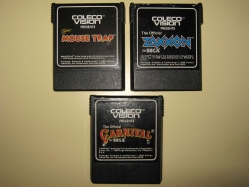
Autopsy:
Cartridges list:
- Mouse Trap by Exidy.
- Zaxxon by Sega.
- Carnival by Sega.
- Lady Bug by Universal.
- Donkey Kong by Nintendo.
click here for the CBS Coleco Vision category.

Autopsy:
Cartridges list:
click here for the CBS Coleco Vision category.
source: wikipedia
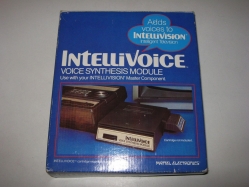
Autopsy:
from Wikpedia:
The Intellivoice Voice Synthesis Module was an adapter for the Intellivision, Mattel’s home gaming console, that utilized a voice synthesizer to generate audible speech.
The Intellivoice was a large, brown cartridge that plugged into the Intellivision’s side-mounted cartridge slot; games specifically designed for the device could then be inserted into a slot provided on the right-hand side of the module.
An International version of the Intellivoice was planned, but never released. The Intellivoice was discontinued in 1983 due to poor sales, with only five titles released with support for the device.
source: wikipedia
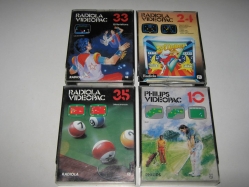
Cartridges list:
click here for the Philips Videopac G7000 category.
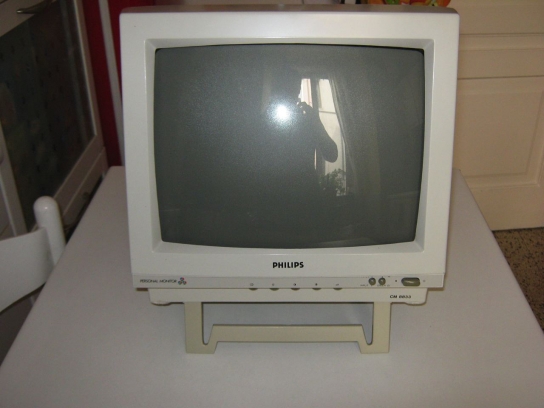
Autopsy:
The Philips CM8833 has an RGB connector which can accept both analogue and digital RGB signal and a RCA connector for Composite signal.
Download: Philips CM8833 Service Manual (2378)
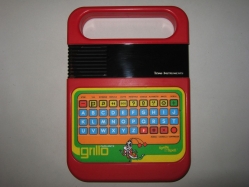
Autopsy:
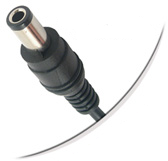
from Wikipedia:
The Speak & Spell line is a series of electronic handheld educational toys created by Texas Instruments that consist of a speech synthesizer, a keyboard, and a receptor slot to receive one of a collection of ROM game library modules (collectively covered under US patent 3934233 ).
The first Speak & Spell was introduced at the summer Consumer Electronics Show in June 1978, making it one of the earliest handheld electronic devices with a visual display to use interchangeable game cartridges.
In 1983, the Speak & Spell was redesigned. The change was even more minute, however, representing nothing more substantial than a redesign of the faceplate graphics.
This version was marketed first in Italian as Grillo Parlante (lit. Speaking Cricket), and then later in the United States and England as the Speak & Spell, and in France as the Dictée Magique again.
source: wikipedia speaknspell.co.uk
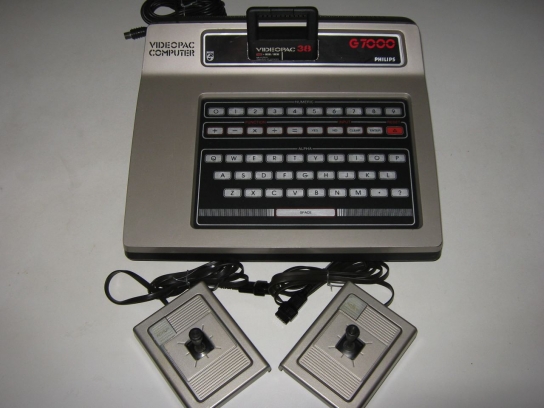
Autopsy:
Cartridges list:
from Wikipedia:
The Magnavox Odyssey², known in Europe as the Philips Videopac G7000, in Brazil as the Philips Odyssey, in the United States as the Magnavox Odyssey² and the Philips Odyssey², and also by many other names, is a video game console released in 1978.
In the early 1970s, Magnavox was an innovator in the home video game industry. They succeeded in bringing the first home video game system to market, the Odyssey, which was quickly followed by a number of later models, each with a few technological improvements. In 1978, Magnavox, now a subsidiary of North American Philips, released the Odyssey², their new second-generation video game console.
In Europe and Brazil, the Odyssey² did very well on the market. In Europe, the console was most widely known as the Philips Videopac G7000, or just the Videopac, although branded variants were released in some areas of Europe under the names Radiola Jet 25, Schneider 7000, and Siera G7000. Philips, as Magnavox’s European parent company, used their own name rather than Magnavox’s for European marketing A rare model, the Philips Videopac G7200, was only released in Europe; it had a built-in black-and-white monitor.
Videopac game cartridges are mostly compatible with American Odyssey² units, although some games have color differences and a few are completely incompatible. A number of additional games were released in Europe that never came out in the US.
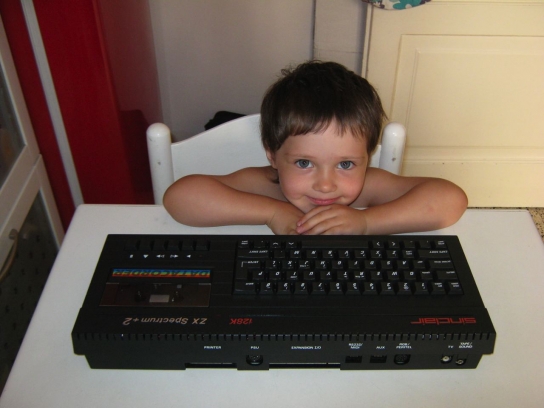
Autopsy:
from Wikipedia homepage:
The ZX Spectrum +2A was produced to homogenise Amstrad’s range in 1987. Although the case reads “ZX Spectrum +2″, the +2A/B is easily distinguishable from the original +2 as the case was restored to the standard Spectrum black.
The +2A was derived from Amstrad’s +3 4.1 ROM model, using a new motherboard which vastly reduced the chip count, integrating many of them into a new ASIC. The +2A replaced the +3′s disk drive and associated hardware with a tape drive, as in the original +2. Originally, Amstrad planned to introduce an additional disk interface, but this never appeared. If an external disk drive was added, the “+2A” on the system OS menu would change to a +3.
As with the ZX Spectrum +3, some older 48K, and a few older 128K, games were incompatible with the machine. The ZX Spectrum +2B signified a manufacturing move from Hong Kong to Taiwan later in 1987.
source: wikipedia
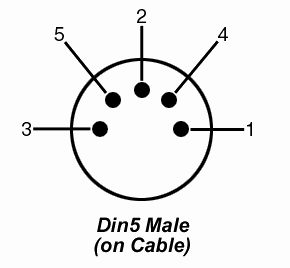
Click here for my Commodore Modem 8010.
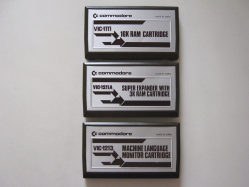
Cartridges list:
click here for the vic-20 cartridges category.
from Wikipedia:
As for commercial software offerings, an estimated 300 titles were available on cartridge, and another 500+ titles were available on tape. By comparison, the Atari 2600—the most popular of the video game consoles at the time—had a library of about 900 titles near the end of its production life (many were variations of another title).
Most cartridge games were ready to play as soon as VIC-20 was turned on, as opposed to games on tape which required a time-consuming loading process. Titles on cartridge included Gorf, Cosmic Cruncher, Sargon II Chess, and many others.
source: wikipedia
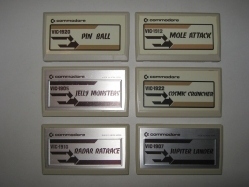
Cartridges list:
click here for the vic-20 cartridges category.
from Wikipedia:
As for commercial software offerings, an estimated 300 titles were available on cartridge, and another 500+ titles were available on tape. By comparison, the Atari 2600—the most popular of the video game consoles at the time—had a library of about 900 titles near the end of its production life (many were variations of another title).
Most cartridge games were ready to play as soon as VIC-20 was turned on, as opposed to games on tape which required a time-consuming loading process. Titles on cartridge included Gorf, Cosmic Cruncher, Sargon II Chess, and many others.
source: wikipedia
Sound fix diagram here. (pdf)
from Cristian Secară Homepage:
The first release (the +3) has a fatal hardware mistake: the 128K sound output is completely distorted.
source: secarica.ro ay8912 Demos
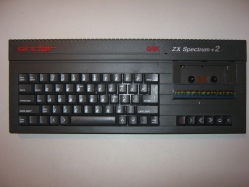
Autopsy:
The original Plus2 (in the grey case) was released in 1987 to get away from the old Spectrums now that Amstrad had taken over. It was very different from previous Spectrums and had a proper typewriter keyboard, built-in casette recorder and 2 joystick ports.
For some unknown reason Amstrad later released a +2A in a black case which is actually a Plus3 with a casette recorder instead of a disk drive.
from Wikipedia:
The ZX Spectrum +2 was Amstrad’s first Spectrum, coming shortly after their purchase of the Spectrum range and “Sinclair” brand in 1986. The machine featured an all-new grey case featuring a spring-loaded keyboard, dual joystick ports, and a built-in cassette recorder dubbed the “Datacorder” (like the Amstrad CPC 464), but was in most respects identical to the ZX Spectrum 128. The main menu screen lacked the Spectrum 128′s “Tape Test” option, and the ROM was altered to account for a new 1986 Amstrad copyright message.
These changes resulted in minor incompatibility problems with software that accessed ROM routines at certain addresses. Production costs had been reduced and the retail price dropped to £139–£149.
The new keyboard did not include the BASIC keyword markings that were found on earlier Spectrums, except for the keywords LOAD, CODE and RUN which were useful for loading software. This was not a major issue however, as the +2 boasted a menu system, almost identical to the ZX Spectrum 128, where one could switch between 48k BASIC programming with the keywords, and 128k BASIC programming in which all words (keywords and otherwise) must be typed out in full (although the keywords are still stored internally as one character each).
Despite these changes, the layout remained identical to that of the 128.
source: wikipedia
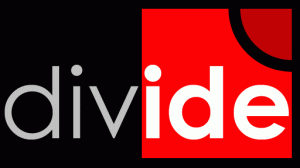
Autopsy:
On the last Photo you see two Divide Interfaces. On the left, the PCB Green color, is the Original from DivIde Homepage , On the right, the PCB Red color, is a “clone” from Ebay.
Both working good, but the Divide “clone” has stopped to work after two weeks, chip ram 62256 is broken. Some components of Divide “clone” are differents from the Original Divide interface. like: some values of resistors.
Here it’s the correct picture of solder side on DivIDE 57c. (thanks to Valesoft)
from Divide homepage:
divIDE is an ATA (IDE) interface which takes your ZX Spectrum computing to a whole new level. As the time takes its toll on ageing media such as audio tapes or diskettes, many ZX Spectrum enthusiasts simply stick to emulation for better reliability and comfort.
With divIDE you can put your software collection to a hard disk, CD-ROM or even CompactFlash card and experience your favourite games, demos and utilities the way the were meant to be run – and even better. Using existing firmwares, many users find their Speccy box again a live platform – time for you to make the switch?
Features:
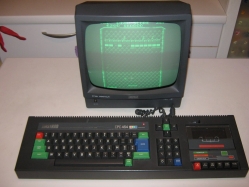
Autopsy:
from Wikipedia:
The Amstrad CPC is a series of 8 bit home computers produced by Amstrad during the 1980s and early 1990s. “CPC” stands for ‘Colour Personal Computer’, although it was possible to purchase a CPC with a green screen (GT64/65) as well as with the standard colour screen (CTM640/644).
The Amstrad CPC’s main competitors were the Commodore 64 and the Sinclair ZX Spectrum, though the CPC was bundled with a monitor unlike the Commodore and the Spectrum. The Amstrad CPC 464 sold approximately over 2 million units.
The first machine, the CPC 464, introduced in 1984, was designed as a direct competitor to the Commodore 64 system. Packaged as a “complete system” the CPC 464 came with its own monitor and built-in cassette tape deck. The CPC 664, with its own built-in floppy disk drive, arrived early in 1985, to be replaced itself later that same year by the CPC 6128.
The original CPC range was successful, especially in Europe, with three million units sold. Following this, Amstrad launched the Amstrad PCW word-processor range, which sold eight million units. Variations and clones of the CPC range were also released in Germany and Spain. The Plus range failed to find a market amongst the higher spec 16-bit Atari ST and Commodore Amiga systems.
source: wikipedia
Recent Comments